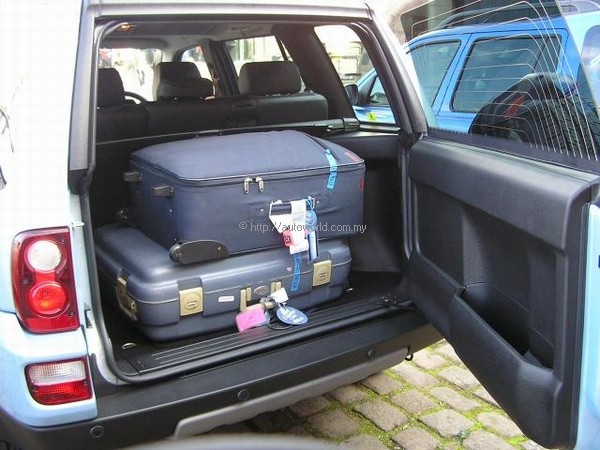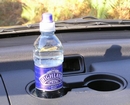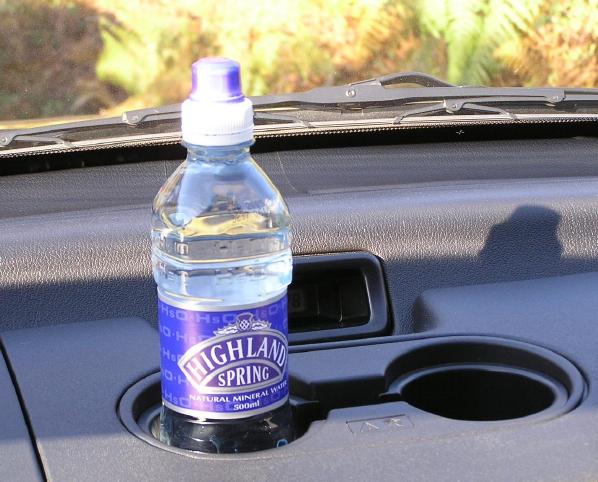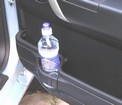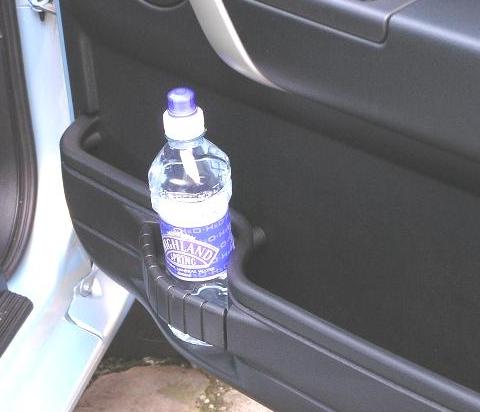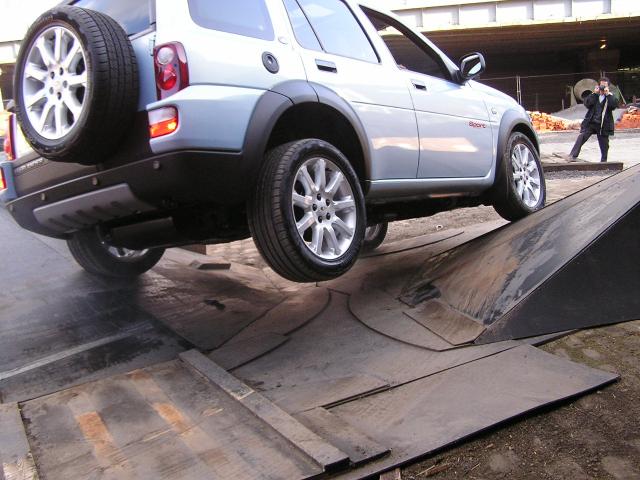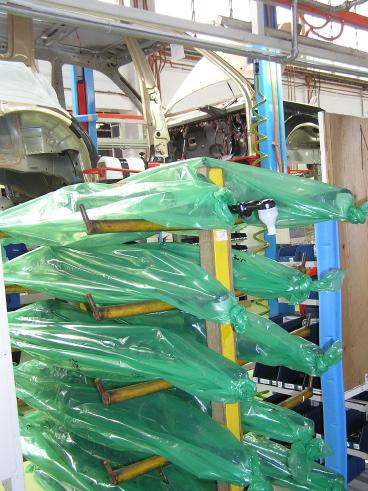First Test-Drive Report: 2004 Land Rover Freelander V6
I remember the international press launch of the original Freelander which I attended in Spain in 1997. It was a major new model because, at last, Land Rover had come out with a model to challenge the Toyota RAV4 and Honda CR-V, then selling like hotcakes. It had been a long time in coming and everyone had wondered if Land Rover, renowned for 4WDs, could actually come out with a product which matched the Japanese rivals in terms of concept.
The problem for Land Rover, apart from having limited funds to develop new models (at least till BMW bought it over and now it is in the huge Ford group), was that it was a THE 4WD SPECIALIST. The British company had made its name producing such vehicles since the late 1940s, just as Volvo stood for ‘safety’.
So while Toyota and Honda and everyone else (with perhaps the exception of Jeep) could come out with a passenger-car derived SUV and no one would think anything, Land Rover could not. All vehicles with that green oval must be thoroughly capable off-road and so the challenge was to ensure that was maintained – while meeting the expectations of a new generation of customers who were younger and just wanted the rugged image.
That was the question we all asked in Spain and through various technical presentations, it became clear that Land Rover had developed a brand new model which was class-leading and after driving it, comparable in performance to the two Japanese rivals. It’s no secret that in their development work, they benchmarked the CR-V and RAV4 and aimed to beat them.
Land Rover also did two things which Honda and Toyota didn’t – it offered a second bodystyle in the form of a 2-door ‘convertible’ and also a turbodiesel engine, the latter making a lot of sense in Europe. This formula worked well and propelled the Freelander to class leadership with over 370,000 units being sold in the next five years.
With the SUV market continuing to boom in the US market, BMW (which then owned Land Rover) certainly wanted the Freelander to be sold there but it needed some additional work done to meet the tough safety regulations and furthermore, the US market needed an automatic with a sufficiently powerful engine for its freeways. The 1.8-litre petrol engine and 2.0-litre turbodiesel just were not suitable and there was, initially, no automatic transmission either.
By 2001, a new engine, derived from the Rover 75, and a new automatic transmission were available and Land Rover was ready to go further. The automatic transmission was needed not just in North America but also in many Asian markets where the convenience is preferred. Unlike the bigger SUVs which were traditionally used for more off-roading, this new generation of smaller ones spent most of the time in the urban ‘jungle’ and in today’s congested conditions, many motorists simply get tired of shifting manually. In Malaysia too, when one goes past the RM100,000 mark, an automatic is expected.
The automatic transmission fitted in the Freelander was not just a simple one – that just would not do for a premium product. Instead, they put in a tiptronic-type transmission, with an option of manual shifting, which was specially engineered to suit this kind of vehicle. To date, no other rival in its class has this type of transmission (unless you consider the Mitsubishi Airtrek a ‘real’ SUV).
It’s not new to Malaysians since it has been available with the Freelander Td4 for a couple of years. While the Td4 has sold well, sales could be better if there was a petrol alternative. Though the turbodiesel is certainly an excellent unit and the vehicle is refined for a diesel, the image here is just not the same as in Europe and many people have been turned off by the engine alone even if the price was okay.
The Freelander 2.5 V6, on the other hand, cost too much because of its engine size. Import duties alone were enough to pay for another Freelander from the factory in UK and at close to RM300,000, a Toyota Harrier made more sense.
Well, 2004 should see a big change in the sales of the Freelander as its price has come down by around RM100,000 due to local assembly. So confident is Land Rover Malaysia (LRM) of its greater acceptance that they forecast selling six times more Freelanders this year compared to last year (though this figure will include the turbodiesel variant to come in May) and also expect the Freelander alone to account for half of all their sales.
Having had the opportunity to test the new 2004 models in UK a couple of months ago (and being agreeable to keeping the story till today), I must say that LRM’s optimism is justified because it is a fine product. It wasn’t the first time that I had driven the V6 version as a few units were brought in two years ago and we tried them in Perak. Everyone loved it but the price was just too steep…
The 2004 version has much nicer looks than before and in fact makes the original one look really dated. The new nose is bolder and the visual link to the Range Rover and Discovery is nice. One thing about Land Rover styling is that there is consistency and various elements immediately tell you that it is a Land Rover product.
Strangely though, the overall dimensions of the Freelander (unchanged from before) are not larger. I would have thought that being a European product, it would be a larger than normal but for some reason, it is not. Nevertheless, there have never been any complaints about its size so it is not an issue. And if there is any comparison to be made, the Toyota RAV4 is also on the compact side and its chief engineer told me that he felt the dimensions were correct for this class of vehicle.
The interior looks unchanged but has a nicer feel and although I am not a fan of leather, I must say that the leather upholstery is nice and just the right texture. There’s a bit more metallic trim now which I prefer to wood and the overall impression is that the quality and image has been taken a step higher in 2004.
The instrument panel is also brand new even though the shroud is almost the same shape. Where the previous model had a more conventional flat panel presentation, the new one had individual meters for the speedometer, tachometer, fuel gauge and coolant temperature. The meters also have metallic trim rings which give a ‘functional’ sort of look similar to the bezels of expensive sports watches.
The warnings are now integrated in the meters and I am not sure if they are a good idea in our bright tropical conditions. In some cars, I have found that such warning lights tend to be on the dim side and might not be noticed. I would much prefer to see them in a row where they can be spotted more quickly. Incidentally, the rocker switches that used to be on either side of the instrument panel are now gone, some of them moved to the middle of the dashboard. The power window switches are also on the doors instead of against the centre console box.
The dashboard design looks like the previous one but is also new in some sections. It’s a clever design which allows easy conversion between left and right-hand drive variants as it is symmetrical in layout. This should reduce costs to some extent.
Those who have driven Freelanders before will notice two cupholders in the middle now, in place of the tray. I found them to be on the shallow side and don’t think that location is a good one either. For one thing, it is exposed to sunshine so if you have a nice cold can of your favourite fizzy drink (and I do not mean beer!), it is going to get warm rather quickly. And as the picture shows, if you do put a water bottle there, it sticks up a bit. . Nevertheless the cupholders still have some usefulness as they can contain keys or coins (but don’t put your toll card there as it will get damaged by the heat).
Storage-wise, the dashboard area is limited and I think it’s due to the ventilation and electronic hardware inside it. The dashboard on the passenger’s side is rather shallow (can’t take a woman’s handbag) and there is another compartment under the steering column. The limited capacity on the dashboard itself is more than made up by the generously-sized pockets on the doors and they still have those clever bottle holders. At the original Freelander launch, an engineer pointed out to me that the way the door pockets are moulded is such that a man can stand on them and they won’t break off. This, I reckon, came from Camel Trophy lessons where people needed to stand on the doors when the vehicle was bogged down!
Where seating is concerned, the compactness I mentioned earlier becomes a positive point. Everything is within easy reach and the driver also sits him up in what Land Rover likes to call the ‘command position’. It’s this position which has made SUVs popular, especially among women who would feel more confident sitting high up and being able to see further ahead.
The seats are well-sized for big and small people – my partner on the drive, Paul David (of Sunday Times CBT) is a taller and larger guy than me and we both agreed on the comfort, even with thick cold-weather jackets on. And with the flat bonnet as well as vertical rear end, forward and rear visibility is excellent so it is easy to park.
Rear accommodation is fine for two adults and a kid. The rear backrest angle felt a bit upright, though, but should not be uncomfortable on long journeys. Like the Discovery, there are nets on the ceiling, another feature which distinguishes the Freelander from other small SUVs.
The boot is modest in volume with around 540 litres of space up to the ceiling. It should be enough for most people if soft luggage is used and even a couple of large hard suitcases can be accommodated without having to fold the seats down. When you do have a need for more space or want to carry that table home from Ikea, then you can fold the rear seats down and get the additional volume.
I like the side-hinged rear door and even with the spare wheel on it, opening and closing is effortless. A side-hinged door is more practical in tight parking spaces as you can open it a bit to put things in whereas a top-hinged door, like what is on the bigger SUVs, requires some space behind and at times, you may not be able to open it (unless the glass can open separately). Incidentally, the Freelander’s rear glass screen does slide down as well.
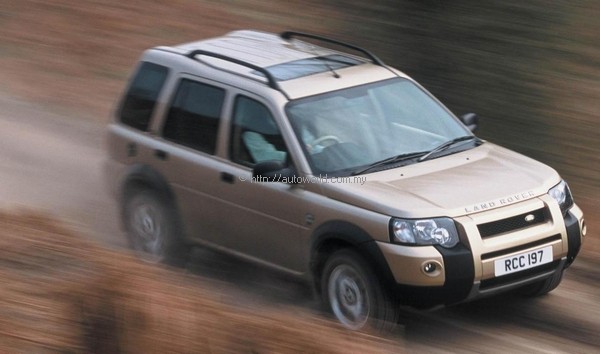 |
On the road
On the move, the Freelander V6 has a character unlike a SUV in that it is quick off the mark and can cruise at high speeds with ease. Torque could be better though but would be acceptable for most people and the engine’s refined feel would induce people to enjoy the drive rather than notice other things.
The transmission is responsive and smooth and when you select sports mode, it does add zip to the drive. Under most circumstances, I would not choose the sports mode since it induces downshifts too readily and doesn’t do fuel economy any good either. Using the manual mode is also nice on twisty roads and so it’s the best of both world’s with the Freelander.
This is a 2.5-litre petrol engine so you cannot expect it to be as economical to run as a smaller engine. Nevertheless, with the engine spinning at 2500 rpm at 100 km/h, fuel consumption should be reasonable when going outstation.
The permanent 4WD system gives a very solid feel during cornering although I felt that the steering effort ‘loaded up’ in tighter corners. I’m not sure why this occurs as I don’t feel it in other small SUVs and it could well be due to the fact that the 4WD is engaged all the time.
The Freelander handles well for a SUV and what’s more surprising is that its tallness is not felt at all. You can chuck it around corners like a passenger car and feel safe. Also commendable is the low wind noise, something which is not always the case with this kind of bodystyle. The only area where I heard any rustling was around the door mirrors which stick our a fair bit.
The Freelander has independent suspension all round and a monocoque structure, both of which are commonplace on passenger cars so you of course get the same quality of ride comfort. Because it is SUV, this can be considered commendable and takes away any argument that owning a SUV means sacrificing comfort.
… and off the road
But does the comfortable ride and lack of a dual-range transfer case mean that the Freelander is not capable off-road? The quick answer is no but this does not mean it is technically as capable as a Discovery or Range Rover. In conceiving the Freelander, it was clear that the target buyers were not going to be hardcore off-roader and therefore did not require superior off-roading capabilities. In fact, 99% of Range Rover owners never make use of the superiority of their vehicle’s 4WD system either.
However, the Freelander is still better off-road than its obvious rivals because of the technology it has in the form of the Hill Descent Control (HDC) and Electronic Traction Control (ETC). These two features make up for the missing transfer case and are more than enough for most owners who may occasionally go into the jungle for fishing or camping. Of course, traction is also dependent on tyres and as fitted, the tyres on the Freelander are dual-purpose types which won’t work too well if conditions are very soft and muddy.
Land Rover found a British forest for us to test the Freelander and it not only had some tough slopes but also a swamp. The British swamp is not like our Malaysian mangrove type but is still very muddy, messy and deep. The Freelander got through it with no difficulty at all and with its 400 mm wading height, the engine was well above the water.
The HDC is a brilliant feature and it is only recently that a couple of other manufacturers have a similar system to offer in their more expensive models. It takes some getting used to and initially, most people will just not be able to keep their foot off the brake pedal. However, after a few times, you can confidently drive over the edge of a hill and let the system work to slow the vehicle down. No more getting into 1st gear LOW and carefully managing the accelerator pedal as you roll downhill at 800 rpm. You could think of it as ‘cruise control’ for downhill driving!
ETC and the 4WD system were better demonstrated in a special course designed by Land Rover at the compound of a museum. The course had sections where one wheel would completely leave the ground and with some drivetrains, this means that forward progress stops. Not so with the Freelander as the system diverts torque to other wheels with good grip to continue moving the vehicle forward. So long as one wheel can grip, you will not be stuck. If the surface is too slippery, then the ETC also comes into play to stop the wheelspin.
The units we drove were built at the Land Rover factory in UK and build quality was certainly high. No squeaks or rattles and a really glistening paint finish too. The ones you can buy in Malaysia are assembled in Shah Alam, Selangor, and as the plant also does Volvos, you can be sure that quality standards are very high. When I was there to see the first units coming off the line, I noticed how they even keep the steering parts wrapped in plastic until they are to be installed and the plant also benefits from lessons learnt from assembling the Freelander at a sister plant in Thailand over the past two years.
As a person who likes SUVs, the Freelander is a highly desirable product to me. It is most definitely at the top of the class and for the price being asked, good value for money (I can now expect a call from LRM saying that my previous excuses like no petrol, no auto and too expensive are invalid!).






